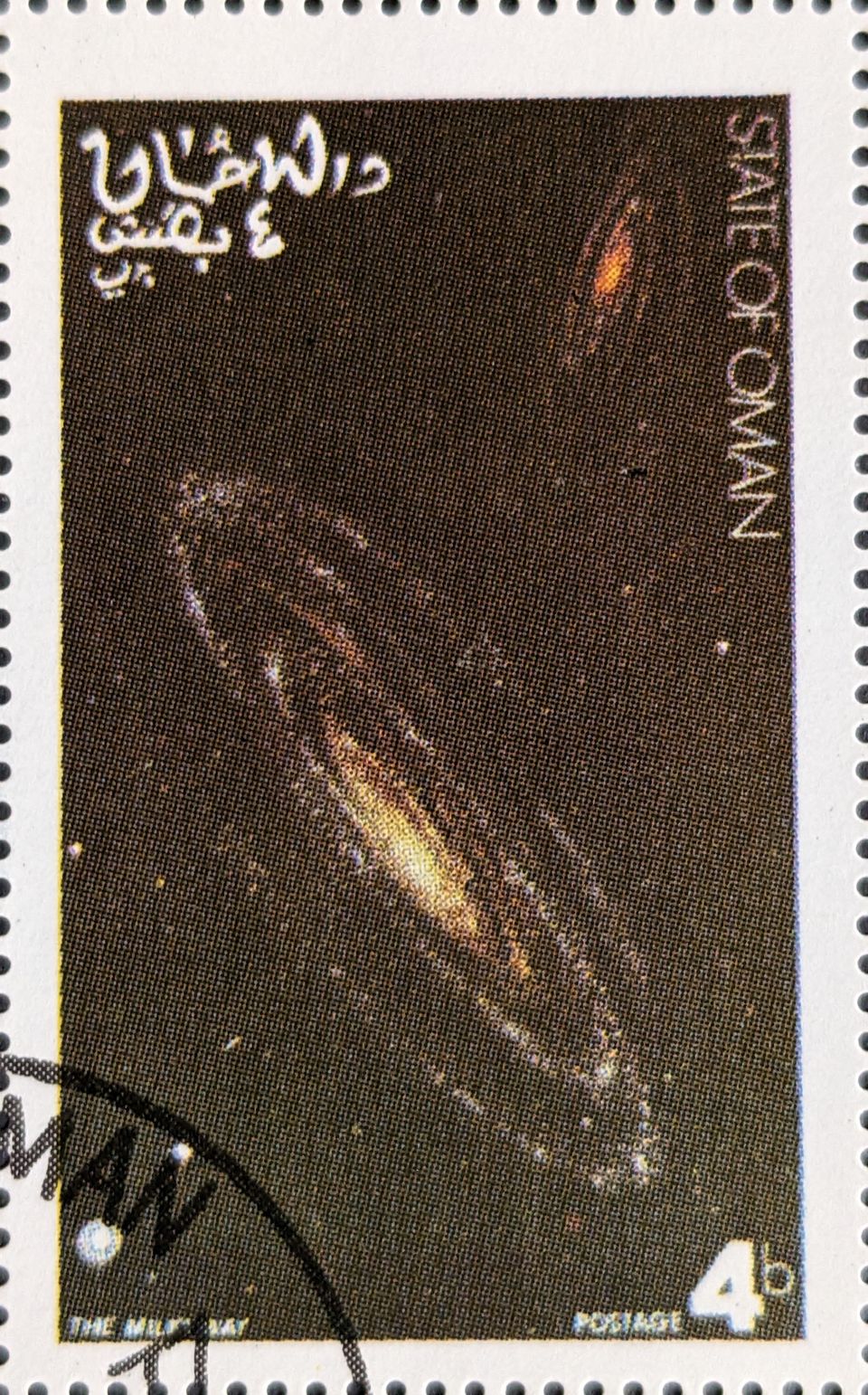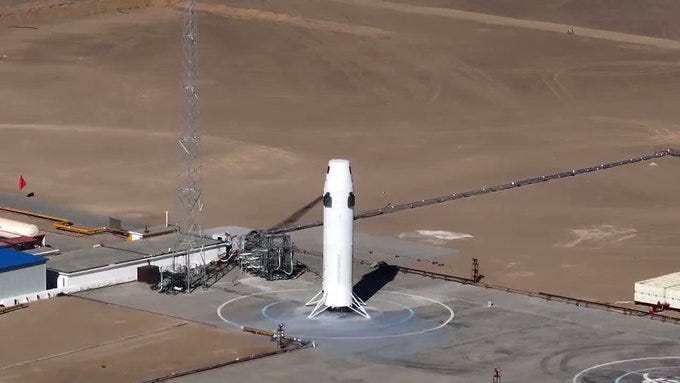Hyperbole or Reality: Reusable Rockets & i-Space’s Hyperbola-2

If you’d like to read my latest analysis for Astralytical, “A Critical Look: European Orbital Launch,” then you might want to head over there. It’s a look at some of the missteps that got Europe to where it is today–no native launch capability. Soyuz plays heavily in that.
Last week, on November 2, 2023, a commercial space launch company in China, i-Space (AKA Beijing Interstellar Glory Space Technology Co., Ltd.), accomplished a significant step. It conducted a feat that, up until that day, only SpaceX and Blue Origin had managed: it launched a rocket nearly 180 meters in the air and then landed it. The whole event took a little over 50 seconds, with the rocket resting back on the pad about two meters from where it launched. It’s a short test and worth watching.

Reusability, The Path Least Traveled
In many ways, i-Space’s November test (particularly Hyperbola-2’s profile) reminded me of watching SpaceX’s Grasshopper as it successfully launched and landed during the company’s early reusability testing days. SpaceX conducted those tests about 11 years ago. It’s difficult to believe no one has come close to achieving and repeating those tests accomplishments during that time.
Then again, the other operational launch companies haven’t even tried. SpaceX’s current competitors are uninterested in reusability despite the major advantages demonstrated by the company’s first-stage reuse. Blue Origin, which has launched and landed rockets successfully, has nothing for orbital launches yet. It hasn’t conducted any scale version of a New Glenn “grasshopper” launch and landing.
The rocket platform that i-Space ran its test on was the Hyperbola-2. It’s not as tall as SpaceX’s Grasshopper, 17 meters versus 32. When i-Space finally uses the Hyperbola-2 to launch missions, its payload capacity is closer to what a smallsat launcher can carry–about 1,900 kilograms–versus the Falcon 9’s 22,800. Hyperbolic proclamations of Hyperbola-2 becoming a SpaceX competitor are cute because its capabilities and size don’t even come close.
However, the test indicates some maturing of i-Space’s technology. The test rocket appears to be using the engine that will power the first stage of the operational version of Hyperbola-2 (which will use, based on images, nine engines). At the very least, the test showed the engine could be throttled and that the software controlling the throttling was effective. Those are positive steps towards a reusable rocket.
The rocket was also under good directional control. It launched and seemed to fly straight up. It then hovered before coming back down, where it hovered briefly before landing–close to two meters from where it launched. It seems the software to control that is well on its way. If i-Space is forced to rely on the BeiDou navigational system, then that might be a reason for the landing inaccuracy. The rocket’s grid fins didn’t deploy during the test (probably because the rocket wasn’t descending that fast). As with SpaceX’s Grasshopper, the company will likely conduct a test to make the rocket hover from side to side.
Based on i-Space’s website, Hyperbola-2 will be the company’s next rocket. Whether it will have the terrible reliability that Hyperbola-1 has (three failures out of five launches) remains to be seen. But the fact remains that i-Space–a company with limited resources–has managed to do what legacy launch providers have not: launched a rocket to over 150 meters and then landed it. And while Hyperbola-2 is too small to compete against Falcon 9, the technology i-Space demonstrated (which SpaceX uses for most of its launches) is scalable.
Hyperbola-2 is similar to Falcon 9 in another critical way: only its first stage is reusable. The second stage, like Falcon 9’s, is meant to be a throwaway. Such a similarity indicates the company is still becoming familiar with the technology’s fundamentals. That also could mean that, at least when compared with Falcon 9, nothing new will be introduced with Hyperbola-2.
If Ifs and Buts Were Candy and Nuts…
While the company has progressed, Hyperbola-2’s success is not guaranteed. For whatever reason, bad luck, company mismanagement, or technical immaturity, a reusable Hyperbola-2 may never happen. However, what might happen in a world where Hyperbola-2 is successfully operational and reusable?
It’s not clear that if/when Hyperbola-2 becomes operational, customers from all over the world will come running. They don’t do that right now, despite the many smallsat launch services in China. Almost all of the satellites launched on rockets from China are for Chinese companies and missions. If that doesn’t change, then Hyperbola-2 would primarily launch Chinese payloads, which may not be enough business for such a rocket (although there is a caveat).
That caveat would be the deployment of low Earth orbiting network relay satellites, similar to SpaceX’s Starlink, but with a more “curated” service, possibly focusing on military applications. Several organizations and companies in China have made panicked noises and plans regarding the need for such a constellation to block SpaceX from accessing certain orbits.
Some potential customers external to China might be tempted to use Hyperbola-2, but their interest would depend on the price to launch. I have yet to find i-Space mentioning that its reusable rocket will provide a less expensive service to its customers. It may be cheaper than other smallsat launchers, but its 1,900-kilogram capacity may push its launch costs higher than SpaceX’s Falcon 9.
The Possible Impacts of Success
That leads to the other consequence, which is Hyperbola-2’s impact on other smallsat launch services. The factors mentioned earlier play into this. i-Space may attract customers who otherwise would have gone with Kuaizhou, Ceres, SSLV, Vega, or Electron. If the Hyperbola-2 is reusable, then it will offer more than its smallsat launch competitors.
For example, using Falcon 9’s activities as a template, Hyperbola-2 will eventually be available almost all the time and able to add last-minute customers with ease. SpaceX’s flexibility in scheduling while increasing its Falcon 9 launch cadence demonstrates this capability. It doesn’t need to store a ton of rockets for every eventuality. It just reuses what it has. i-Space will have the same flexibility with a reusable rocket in its inventory.
If the company’s management is paying attention, it will be able to launch singly but offer rideshare as well (SpaceX shows there’s a market for that). Hyperbola-2’s greater capacity than its competitors (mentioned above) will allow for that capability. It’s greater capacity also allows for deploying more LEO network relay satellites at once.
That’s just for starters. A lot can be learned from watching SpaceX and its use of the Falcon 9.
Perhaps something less obvious is that smallsat launch competitors will no longer have the argument of higher prices because they provide a “bespoke/boutique” service to orbit. If Hyperbola-2 were available from anywhere other than China, then its potential impact on smallsat launch competitors would be more significant. But it isn’t, and limited access and trust problems, primarily due to the national government’s actions, will initially keep the rocket from becoming a threat against other smallsat launch offerings.
Even so, its mere existence may provide a kind of stimulus for those companies floating reasons why customers should pay more for less. Current and future smallsat launch companies have argued that there are customers out there willing to pay more per kilogram because their rockets will get a customer’s satellite to a specific and desired orbit instead of compromising on rideshare.
A reusable smallsat launcher could get rid of that already doubtful argument. Instead, those smallsat companies will need to do something different. They will need to do something that makes them competitive instead of attempting to convince money away from potential marks. Maybe they simplify the customer interface, whether that interface is the business’s storefront or the integration between a customer’s spacecraft and the rocket. Perhaps they can launch more quickly. Those are just a few examples of the many options for i-Space competitors to still compete against even a reusable rocket. They could also be used to help SpaceX competitors.
Sure, Hyperbola-2 still needs to demonstrate reusable operations. However, its demonstration indicates that first-stage reusability is still possible. For competitors to ignore that possibility and continue down the road of making more expensive, non-reusable rockets seems not just inflexible but also non-competitive. Hyperbola-2 won’t make SpaceX look over its shoulder (SpaceX is already working on what it thinks the future of launch will be), but others should pay attention.




Comments ()